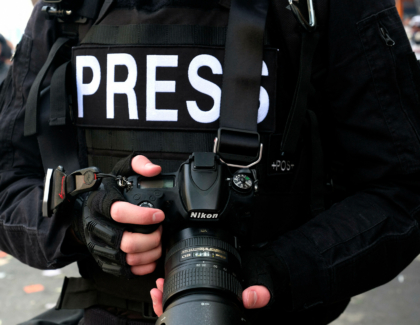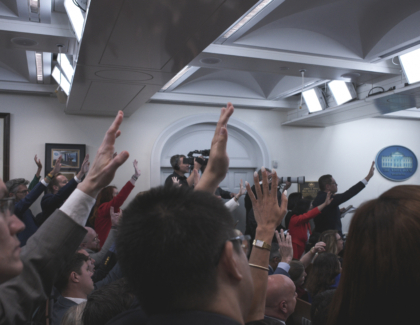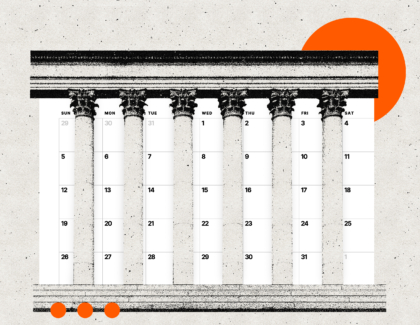Sign up for the daily CJR newsletter.
For years, sizing up the media’s shortcomings has been a popular if fuzzy sport, full of subjective observations, grand generalizations, and polemical abstractions. Al Franken, for example, is happy to tell us that “Rush Limbaugh is a Big Fat Idiot,” but he never tells us precisely how big, or how idiotic. Ditto for Bill O’Reilly, who warns us of the media’s anti-Christmas bias. But he never gives us the statistical evidence for the apparently rampant Santa-hating. He never gives us the raw numbers.
Let’s face it — that’s frustrating. We’re a nation of statistics-loving people who enjoy nothing more than complaining about the bias of our news media, and yet we don’t have any numbers to back up our drunken, late-night assertions. In other words, there’s a lack of good, hard numbers to toss around haphazardly whenever we’re complaining about whomever it is we like to complain about.
What the world desperately needs is a bias meter. Something like a radar gun that you could point at a passing story and get a quick numerical readout on the velocity and direction of its bias: There goes Dan Rather reporting on mujahideen in Pakistan … 26.2 to the left. And look, there’s Greta Van Susteren reporting on a missing high school kid (again) … 38.7 to the right.
That’s why we were excited this week to get a press release from UCLA touting a soon-to-be published study by a team of social scientists who have finally managed to size up the bias of various American news outlets … with numbers.
The paper, “A Measure of Media Bias,” by Tim Groseclose, a political scientist at UCLA, and Jeffrey Milyo, an economist at the University of Missouri, will be published this month in the Quarterly Journal of Economics. At first glance, the paper’s conclusion — that many major media outlets show a strong liberal bias — is fairly mundane. After all, claims about the media’s liberal and/or conservative bias are so commonplace as to be downright boring.
Nevertheless, the study is chock full of memorable quantitative observations that could come in handy this holiday season if you’re tossing back a few cups of eggnog. To wit: According to the authors, on a scale in which higher numbers indicate liberal bias and lower numbers indicate conservative bias (and in which the average American voter measures a score of 50.06), the New York Times measures a 73.7, Fox News’ “Special Report with Brit Hume” measures 39.7 and the Washington Times scores a 35.4.
But the authors take it one step further, from just quantifying bias to recommending how to adjust one’s reading and viewing habits to achieve a perfectly balanced view of the world. “To gain a balanced perspective, a news consumer would need to spend twice as much time watching ‘Special Report’ as he or she spends reading the New York Times,” note the authors. “Alternatively, to gain a balanced perspective, a reader would need to spend 50 percent more time reading the Washington Times than the New York Times.”
Thanks to the scientific underpinnings of this bias-detection method, it’s probably only a matter of time now before the authors come up with some valuable spin-off technologies. We’re thinking of, say, a News Pyramid (similar to the USDA’s Food Pyramid) that could explain exactly how to plan your news consumption for an optimally nutritive media diet (or, for that matter, tell you which junk media to cut back on).
For the time being, the authors have taken an admirable first step. They have taken the sometimes challenging, intermittently dangerous, occasionally heroic and always complex work of thousands of dedicated reporters and reduced it all to easily digestible numbers (down to the one-tenth a point).
Nevertheless, their methodology still falls short of the ideal bias-detecting machine. To date, their method involves hiring a bunch of college students to comb through some (but not all) of the archives for some (but not all) American news outlets and then counting up some (but not all) references to some (but not all) think tanks and then comparing some (but not all) of these references to the amount of times certain members of the U.S. Congress refer to some (but not all) think tanks. Suffice to say, it’s a bulky bit of bias-detection and quite primitive. But with a few tweaks, this new quantitative approach to media criticism will undoubtedly soon replace all the old tools of the industry — from analogy and analysis, to insight and wit.
Say goodbye, all you devotees of A.J. Liebling.
In the meantime, we can all begin pondering one of the study’s most puzzling results. According to the authors, the Drudge Report (60.4) is significantly more liberal than CNN’s “NewsNight” (56.0). Surprising, yes.
Then again, it’s possible that Drudge’s siren could be interfering with the bias-detecting machinery.
Has America ever needed a media defender more than now? Help us by joining CJR today.






